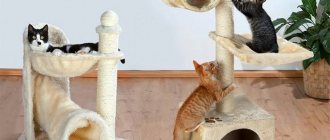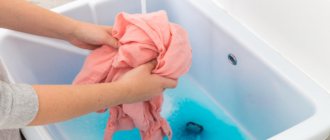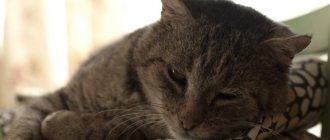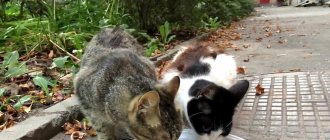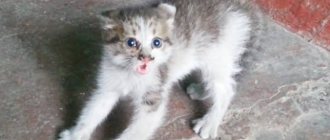What do you need for a scratching post?
scratching post
-column
For work you will need: a beam approximately 70 cm long and at least 5 cm wide, a round or square support made of wood about 4 cm thick. Instructions for assembling the scratching post
: On the support of the future claw handle, draw one line in the middle and a second line perpendicular to it, connecting them in the center.
Interesting materials:
How to cover furniture during renovation? How to satisfy your hunger while dieting? What is 1 light year equal in time? What is the tension force of the thread during the movement of the loads? How long does it take to change antifreeze? How long does it take to get a license? What happens if you sleep all the time? What is the consequence of weightlessness during space flight? What can you eat while dieting? What can you cook for breakfast while on a diet?
Making a scratching post
As we said, online stores now have a huge range of different scratching posts: all colors and shapes. Why make a scratching post with your own hands? Let's list the main advantages of a homemade device for cat claw points:
- Saving money. A homemade structure will cost you much less than a purchased one.
- To make it, you can take everything you have or make it to match the style of your apartment interior.
- You can make a real castle with passages, steps, a two- or three-story house for your pet.
- All design elements can be adjusted to the dimensions of your pet. For example, today the most popular breed is the Maine Coon. These are quite large cats that will require a slightly different size house with a scratching post.
For a simple kitty, you only need two parts: rope/rope and a post.
Step-by-step instructions for making a homemade house with a scratching post
We draw a rectangle measuring 40x60 cm on our base; the two extreme corners can be rounded as desired. Using an 8mm diameter drill, drill holes in the indicated locations.
This drill diameter should be used when assembling confirmations. If assembly will be carried out using self-tapping screws, the holes should be smaller.
We draw a bed with a diameter of 35 cm, then we also cut it out with a jigsaw. We drill two holes in the center, the distance between them is 5 cm with a column diameter of at least 9 cm.
Next we proceed to the walls. You will need two identical parts, one with an entrance, the other without. Dimensions in the photo. It is necessary to drill two holes into the end of the chipboard from below, leaving 7 cm from each edge. Hole diameter 4-5mm. This is where confirmations will be placed. We take fiberboard and cut out a figure 90x39(40)cm. It will serve as the roof of our house.
Let's move on to the scratching post itself. Cut a cardboard tube 60cm high. Using an ax, we cut out two pieces of wood from a tree, as shown in the photo. We also make holes of a smaller diameter in them at a distance of 5 cm.
After this, we place our piece of wood in the pipe and fix it with self-tapping screws. This mount will hold the scratching post firmly and is easy to make. For home production - the best option.
We wind the rope onto the pipe. We fix it first and at the very end. The rope should be wound tightly and tightly; it is better to glue it for longer use.
Let's start covering the parts. We take the necessary fabric and upholster the parts using a stapler.
After all the steps we will get this picture:
We screw the walls of the house to the base using confirmations. You will also need two small bars to secure the roof. If possible, it is also better to cover them with fabric on both front sides. We screw them to the base.
Using nails we nail our roof to the wall and beams. The house is ready! All that remains is to connect the column with the base and the bed with confirmations.
And this is what we got:
How to make a scratching post with a cat bed
Preparation
First you need to determine what size the structure will be for your cat. To determine the size of the bed, estimate how much space your cat occupies when curled up and when lying stretched out. Based on these measurements, select a rectangle of a suitable size from which to cut an oval bed. For the base, select a rectangle of the same size. If the base is smaller, the structure may be unstable and the top will look too massive.
To determine the height of the structure, extend the cat along the wall. The highest point that the cat reaches with its paws from the floor will determine the height of the scratching post. The height can be increased a little, since cats like to stretch out when sharpening their claws. It is not necessary to wrap the bottom of the pipe with rope; the cat will not use it anyway. We will cover the bottom of the pipe with the same fabric as the base.
How much rope do you need?
Currently, any rope product has high strength and resistance to tearing. But before starting work, you need to decide on the length of the rope. There are two measurement methods.
- Use old rope for a scratching post. This means removing the rope completely, measuring it and ordering a similar one in an online store or taking it with you to the store so that the seller can advise you on the best option.
- Calculate using the formula: Rope/rope length = (post height/rope/rope diameter) * 3.14 * post diameter.
Hemp for scratching post
If you just can’t choose or for some reason don’t want to purchase sisal and jute rope, then you can consider another option for wrapping the scratching post - hemp threads. This material is made from hemp plants, which do not contain narcotic substances. The fibers are used in the production of fabrics and ropes. Although jute and sisal ropes are favored by pet product manufacturers, hemp is just as good, proving that hemp remains an important resource in the industry. New fibers are also mistakenly called hemp - sisal, jute and others. So, let's look at the advantages of hemp threads:
- A variety of colors (the shade can be absolutely any, depending on the processing method).
- Has an average price.
- Its properties are superior to jute rope.
- High strength.
- Resistance to environmental influences.
- High hygroscopic and anti-electrostatic properties.
How to calculate the length of a rope for a scratching post?
The length of the fiber directly depends on the height of the column. If it is 1 m with a cross-section of 11 cm, then the length of one turn will be 35 cm. By making a simple calculation, you can find out that the total length of the rope must be at least 35 m.
Although some animals have lived alongside humans for a long time, they are not devoid of their natural instincts. Properly chosen furniture for your pet will help avoid damaged furniture and torn wallpaper. Therefore, hurry up to make a house or scratching post for your pet. By making furniture for your pet with your own hands, you will not only save money, but also create a unique product that will suit your pet specifically.
What materials are used to make a DIY scratching post?
You don't need too many materials to make the product, most of which you can find at home or in the garage. Carry out an audit to find the necessary material for a homemade scratching post for cats:
- A piece of board, timber, plastic pipe - anything that can play the role of a trunk.
- Any covering or rope that is convenient for sharpening claws.
- A couple of planks to build shelves.
- A little fabric, for example, an old flannel blanket, is quite suitable for a bed.
Note! If the DIY procedure seems complicated to you, there is a simple alternative - bring a small stump with bark into the house. Pussy will be satisfied.
What is better for a cat, sisal or jute?
If you have a kitten or your cat uses the scratching post not very often and without much activity, then you can give preference to jute - it is softer and more pleasant in cost. If you have an adult cat (especially a large breed) or several pets, choose sisal
.
Interesting materials:
How to properly and quickly pick blueberries with a combine? How to cut glass correctly and evenly? What is the correct name for irises or irises? How to use a gasoline generator correctly? How to use vermicompost correctly? How to use double superphosphate correctly? How to use thinning scissors correctly? How to properly use phytosporin m for indoor flowers? How to properly use succinic acid for seedlings? How to use an air ionizer correctly?
Types of scratching posts
What kind of scratching post you get as a result depends only on your desire, skills and the amount of time spent on its manufacture. To make the simplest standard structure in the form of a column covered with rope, it will take a maximum of an hour. If you decide to put together an interesting gaming complex for one or several pets, then you will have to work hard and allocate much more time for this.
The simplest version of the play complex consists of several posts and a shelf fixed on top where the pet can rest. The remaining details depend only on your imagination.
Which rope to choose for a scratching post?
What scratching posts for cats are made of is a question that worries many owners who decide to please their pet. There are several common materials you can use to wrap a post:
- Cotton rope. It looks beautiful and fits perfectly into any interior, but is much more expensive than other materials.
- Sisal rope. It costs an order of magnitude less, but has a more fleecy structure, lasts quite a long time, and is durable. Its shade is pale yellow and grayish.
- Jute rope. Typically used in commercially available claw clippers - the cheapest option. It is darker, less durable, looks unaesthetic, and can ruin a luxurious interior with its appearance.
This is interesting! To attract the animal to the structure, use homemade toys, although be sure to secure them well - cats love to tear off such devices.
Making a scratching post for your pet is quite simple: you don’t need to look for unusual materials or work for a long time - it takes no more than half an hour to make. This necessary accessory will make life easier for you and your pet, so be sure to get it to keep your furniture and wallpaper presentable. The cat will certainly be happy with your efforts; its claws will be in order, as will its psychological state.
Types of ropes
Today there are several types of the most common ropes:
- Cotton. The most expensive type of material, it looks beautiful and will fit into any interior.
- Sisal. Lower in cost, durable with a gray-yellow tint.
- Jute rope for scratching post. It is the most popular material for scratching posts. It is the most affordable and durable. With its help you can make designs of the most intricate shapes. It is not as rigid as the previous representative and is not inferior in strength and elasticity.
The website https://ecojute.ru/articles/kanat-dlya-kogtetochki/ presents a large assortment of jute ropes of different diameters. Choose and purchase. Delivery is carried out throughout Russia.
Popular types of materials
When choosing furniture for animals, it is worth buying natural materials. Jute or sisal work well. They are made from environmentally friendly fibers, do not electrify and are safe for both people and pets. Cats love scratching posts and houses made from natural materials, while products made from synthetics are often ignored. Animals may be repelled by the smell of paint or impregnation.
Nylon or polypropylene ropes can also be used, but it is worth remembering that they stretch quickly, and cat claws often get tangled in them. Pet furniture made from hemp rope is quickly fluffed up by tailed animals.
Jute rope
Jute rope is made from natural fiber that is twisted into three strands. The width of the product is in the range of 6-70 mm. The rope has a smooth surface, usually light brown in color.
Advantages of jute ropes:
- elasticity;
- resistance to moisture and ultraviolet radiation;
- ease;
- low price.
It is also worth noting that the material does not accumulate static electricity and does not slip in your hands. This rope looks attractive and is easy to work with. Most often, jute rope is used to make scratching posts.
Sisal rope
Sisal rope is also an option for creating furniture. This material is moderately hard, but quite strong. The fibers are made from agave leaves, due to which the rope lasts much longer than analogues made from bast fibers. Sisal rope is easily recognized by its light brown and golden shades.
Another important advantage of this rope is its low cost. Combined with a long service life, this option is one of the most profitable, but you also need to take into account the character of your pet.
Cotton rope
Cotton rope is a durable product with good mechanical characteristics. For its production, natural fiber is used, which is intertwined in a special way. Cotton rope is used in many areas: tourism, sports, and even to create furniture for pets.
This material is environmentally friendly and safe (it does not emit toxic substances when heated). But when buying this type of rope, you need to remember that it shrinks a little if it gets wet, so you need to buy with a reserve. The only drawback is the high price. Because of this, jute and sisal ropes are more popular.
Rope scratching post
To make a structure about one meter high you will need to prepare:
- Pipe.
- A wooden beam or construction foam with which the pipe will be filled.
- Textile.
- Sisal or jute rope.
- Glue.
- Stapler with staples.
- Wooden base.
DIY production:
- A square-shaped wooden base is covered with carpet, fur, velvety or other dense and fairly thick fabric. The material is fixed to the podium at the base with glue, and at the edges using a stapler and paper clips.
- The post is wrapped with rope, the turns of which should fit as closely as possible to each other. Every ten centimeters, the rope is fixed to the post with glue.
- The pipe is weighted with timber or filled with construction foam.
- The post is installed in the middle of the wooden base and attached to it with self-tapping screws.
- The top of the pipe is decorated with a “cap” made of any material.
You can tie a long rope , and hang a toy or ball from the end of it.

